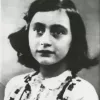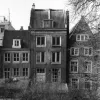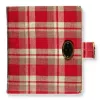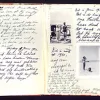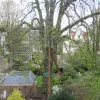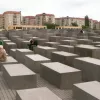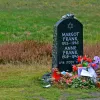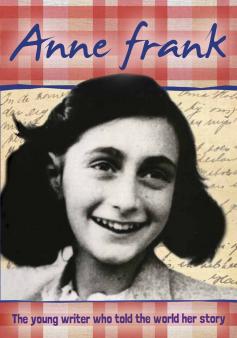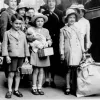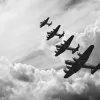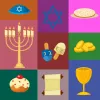Important update from TheSchoolRun
For the past 13 years, TheSchoolRun has been run by a small team of mums working from home, dedicated to providing quality educational resources to primary school parents. Unfortunately, rising supplier costs and falling revenue have made it impossible for us to continue operating, and we’ve had to make the difficult decision to close. The good news: We’ve arranged for another educational provider to take over many of our resources. These will be hosted on a new portal, where the content will be updated and expanded to support your child’s learning.
What this means for subscribers:
- Your subscription is still active, and for now, you can keep using the website as normal — just log in with your usual details to access all our articles and resources*.
- In a few months, all resources will move to the new portal. You’ll continue to have access there until your subscription ends. We’ll send you full details nearer the time.
- As a thank you for your support, we’ll also be sending you 16 primary school eBooks (worth £108.84) to download and keep.
A few changes to be aware of:
- The Learning Journey weekly email has ended, but your child’s plan will still be updated on your dashboard each Monday. Just log in to see the recommended worksheets.
- The 11+ weekly emails have now ended. We sent you all the remaining emails in the series at the end of March — please check your inbox (and spam folder) if you haven’t seen them. You can also follow the full programme here: 11+ Learning Journey.
If you have any questions, please contact us at [email protected]. Thank you for being part of our journey it’s been a privilege to support your family’s learning.
*If you need to reset your password, it will still work as usual. Please check your spam folder if the reset email doesn’t appear in your inbox.
Anne Frank and the Holocaust
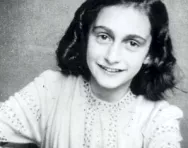
About Anne Frank and the Holocaust
The Holocaust was something very sad that happened during World War II and many millions of people were hurt or killed. A girl named Anne Frank wrote in a diary about what it was like to live during this time, and when we read that today we can understand what others like Anne and her family went through.
Anne and her family were Jewish, and during World War II in Axis countries that meant that they were in danger of being arrested and hurt because of their religion.
While it’s sad to read about what happened during the Holocaust, it’s important that we know about it to try to prevent things like that ever happening again.
Top 10 facts
- Anne Frank was born in 1929 in Frankfurt, Germany.
- Anne’s family were Jewish, which meant life was very hard for them in Germany after Adolf Hitler became the leader there.
- Hitler made a lot of laws that went against people who were Jewish, and eventually he ordered that Jewish people be arrested.
- Anne Frank’s family moved to Amsterdam in The Netherlands to be safe, but when World War II began, this wasn’t safe anymore. They built hidden rooms inside a house where Nazi soldiers wouldn’t find them, and friends brought them food.
- Anne and her family hid for two years before they were found, arrested by the Nazis and taken to concentration camps.
- Most people in concentration camps did not survive; around 6 million Jewish people died during World War II. Those who survived were freed when Allied troops found them, but Anne, her older sister and her mum all died before this happened. Anne’s dad survived, and found Anne’s diary. He published it so others could read about Anne and about what she and her family went through.
- As well as Jews, the Nazis also sent people with physical and mental disabilities, homosexuals, communists and Romanis to the concentration camps to be killed.
- The period of time when this happened to Anne and many others who the Nazis didn’t like is called the Holocaust. Around 11 million people were killed during the Holocaust. They were civilians (not soldiers).
- Holocaust Memorial Day is on 27 January.
- It’s important to learn about the Holocaust so we can try to make sure it doesn’t happen again, and to understand how important it is to be tolerant of who other people are, how they live and what they think and believe.
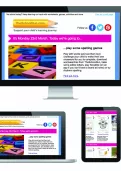
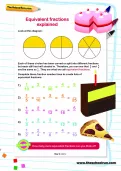
Start your child on a learning programme today!
- Weekly English, maths & science worksheets direct to your inbox
- Follows the National Curriculum
- Keeps your child's learning on track
Did you know?
- Judaism is a religious faith. People who follow Judaism are called Jews.
- Anne named the diary she wrote in Kitty. It had a red checked print on the cover.
- Anne had always dreamed of being a published writer someday. Because her dad published her diary, she became one even though she wasn’t around to see it happen.
- Anne and her family lived in rooms that could only be accessed through a door hidden behind a bookcase. You can take an online tour of where they lived on the Anne Frank House website.
- Holocaust Memorial Day is on 27 January every year.
Browse through the gallery and see if you can spot the following:
- Anne Frank at age 12
- The house where Anne and her family hid
- Anne’s diary
- Pages from Anne’s diary
- A tree that Anne could see from the secret rooms she and her family hid in
- The Holocaust memorial in Berlin, Germany
- Anne and Margot's tombstone
Gallery
About
When Adolf Hitler and the Nazis came to power in Germany, he created a lot of strict laws that were unfair to Jewish people. Some of these restrictions were:
- Not allowed outside after 8pm
- Couldn’t ride on public trams
- Couldn’t own a business
- Jewish children could only attend special schools
So, when Hitler started fighting with other countries in Europe so he could claim more land for Germany, these strict laws came along too. Lots of people who the Nazis didn’t like, especially anyone who was Jewish, were suddenly in a lot of danger.
If the Nazis arrested someone, they could be taken to a concentration camp where they were made to work very hard. Conditions were terrible, and people weren’t given enough to eat or warm clothes to wear. Concentration camps were kept secret from the Allied troops, and some didn’t know about them until they found them towards the end of World War II. They freed the people who were kept there and gave them food and medicine.
Over 11 million civilians died in Europe while the Adolf Hitler and the Nazis were in charge. Today, we call this the Holocaust.
Lots of what we know about what happened during the Holocaust is from people who survived it, and from things people wrote about it. One source is a diary written by Anne Frank, who was born in Germany. Anne and her family were Jewish, so when things started getting difficult for them in Germany after Hitler came to power they moved to the Netherlands. Lots of Jews left Germany around the same time, for the same reasons. But, during World War II Hitler invaded the Netherlands, and Anne’s family were in danger again.
Things got really scary when Anne’s older sister got a letter saying she had to go to a concentration camp. So, Anne’s family went into hiding, at a place that Anne’s dad had prepared in case something like that happened. The rooms they lived in with four other people could only be accessed through a door hidden behind a bookcase. They couldn’t go outside and there wasn’t much space for everyone, but they were safe. A few friends helped them out by making sure they had enough food. Anne wrote about all of this in her diary.
But, after two years, Nazi soldiers found these secret rooms and arrested Anne, her family and the others living there. They were taken to concentration camps, and sadly, Anne, her mum and her sister died while there. Anne’s dad survived. When Allied soldiers found a concentration camp they would free the prisoners and try to help them get better.
A friend of Anne’s dad who had helped them when they were hiding found Anne’s diary, and gave it to her dad. Her dad decided to publish it so everyone would know about Anne and what the family had gone through.
Every year on 27 January, we mark Holocaust Memorial Day. On this day in 1945, Allied soldiers freed prisoners at a concentration camp called Auschwitz. It’s really hard to read about they terrible things that happened to people during the Holocaust, but it’s important for us to understand what can happen when we are prejudiced against other people because of what they look like, the way they live or what they believe. Remembering the Holocaust will help us to prevent something like that ever happening again.
Related Videos
See for yourself
- The Holocaust exhibition at the Imperial War Museum
- Watch a video and explore where Anne Frank stayed in hiding
- See images of Anne's writing and photographs of her
Books to read
- When Hitler Stole Pink Rabbit by Judith Kerr
- The Diary of a Young Girl by Anne Frank (abridged for younger readers)
- Number the Stars by Lois Lowry
TheSchoolRun also has a guide to age-appropriate books about the Holocaust for primary school children.
Children's books about Anne Frank and the Holocaust
Find out more:
- Watch a BBC Bitesize animation to introduce Anne Frank to KS1 children
- CBBC: What was the Holocaust?
- The last train from Prague is a BBC School Radio play about the children who came to Britain on the 'kindertransport'
- Anne Frank timeline
- Find out about the actions of Sir Nicholas Winton, the British man who helped 669 children flee Nazi Germany, in three BBC Schools audio stories
- Information about Holocaust Memorial Day
- The CBBC Newsround introduction to Anne Frank
- Watch a video introduction to Anne's life and the impact of her diary
- Information about the Holocaust and concentration camps
- The Holocaust Memorial Trust produces educational materials for teachers and parents about the Holocaust, including information about Miep Gies, the Dutch woman hid Anne, her family and four other Jews in her house to try to keep them safe from the Nazis
- Watch Anne Frank: A Life in Hiding - A Newsround special
- In Finding my Family: Holocaust - A Newsround Special, Holocaust survivor Steven Frank takes his teenage granddaughter on a journey to learn about his experiences during the Holocaust
- Find out why Anne Frank's diary still means so much to young people today
- Make a Holocaust Memorial Day Memorial Flame
- The National Literacy Trust Holocaust Memorial Day resources include a story in five instalments by Tom Palmer and videos and worksheets to support and inspire children to write their own responses
